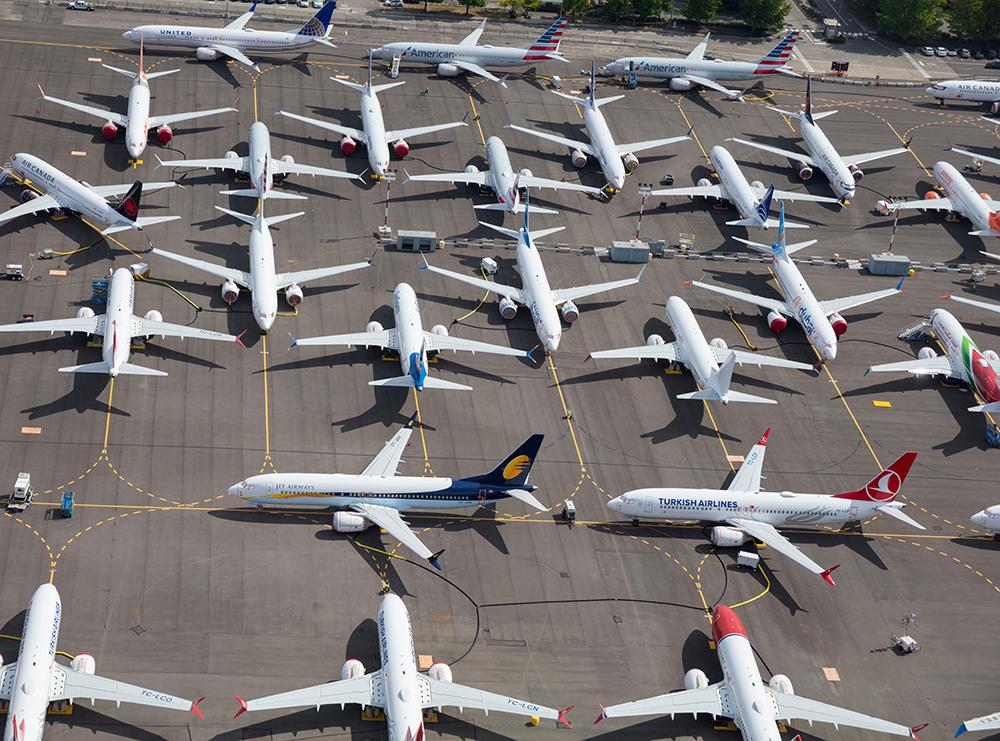
Census Bureau trade statistics are now out for 2022, and they paint a picture of U.S. civilian aircraft exports that are far from full recovery. The Boeing 737 MAX grounding, COVID-19 restrictions, supply chain difficulties, war in Eastern Europe and tensions with China left total U.S. civil aircraft, engine and part exports in 2022 at less than $94 billion—still 38% short of their inflation-adjusted peak of $151 billion in 2018.
The pattern of U.S. exports has shifted, too, with much smaller sales to Russia and dramatic cuts in sales to China, a much more important aviation market. At the same time, some smaller markets have held up well or have even grown a bit.
The dip started before COVID-19, with the March 2019 MAX grounding cutting total exports by $8 billion. Exports to China shrank even more drastically, from a peak of $21 billion (inflation-adjusted) in 2018 to about half that, $12 billion, in 2019.
Then COVID-19 hit and China kept MAXs grounded much longer than other nations. China had taken 125 Boeing aircraft in 2018, but took only 35 in 2019, three in 2020, four in 2021 and 11 in 2022. U.S. aircraft, engine and part exports to China have thus remained at $5-5.5 billion for the last three years.
When will China increase its U.S. purchases? Jonathan Berger, managing director of Alton Aviation Consultancy, is not optimistic, predicting: “Pretty much zero deliveries until China allows MAX deliveries again, and unlikely anytime soon given the balloon-gate incident and canceled Blinken visit.”
Another possibly worrisome signal: The Civil Aviation Administration of China, which had been virtually present for the last two years at the annual symposium of the Aeronautical Repair Station Association (ARSA), will not participate this year. ARSA Vice President of Operations Brett Levanto says, “They were invited but have another event that week.”
U.S. exports to Russia were aborted by sanctions and dropped from $2-3 billion a year before 737 MAX and COVID-19 problems to less than $100 million last year.
Japan, which was buying $7-9 billion of U.S. aircraft materials before COVID-19, cut that rate to $2-4 billion in the last three years, likely due to its very cautious approach to international travel during the pandemic. Caution was general in Asia-Pacific during the pandemic. Even excluding China, Asian nations went from $40-50 billion in U.S purchases annually in years before the virus to around $20 billion annually in 2020-22.
U.S. sales to Europe have held up a bit better, peaking at $59 billion in 2018, declining to $35 billion in 2020, then recovering somewhat to $38 billion in 2022.
Still, there is some good news in emerging markets. India bought $2 billion worth of U.S. aircraft in 2022, higher than in any previous year except for the peak in 2018. Brazil, with nearly $7 billion in purchases in both 2021 and 2022, is also near its all-time peak. And exports to all the nations of Central and South America, which dipped in 2020, stood at $12 billion in 2022, matching the highest levels of previous years.
However, Africa is still only at about half its pre-crisis level of purchases.
The statistics indicate stagnant major markets but promising small ones, which provides some consolation. The prospects of U.S. civil aviation companies—not just Boeing—likely now hinge on foreign policy decisions as much as commercial air travel recovery.





